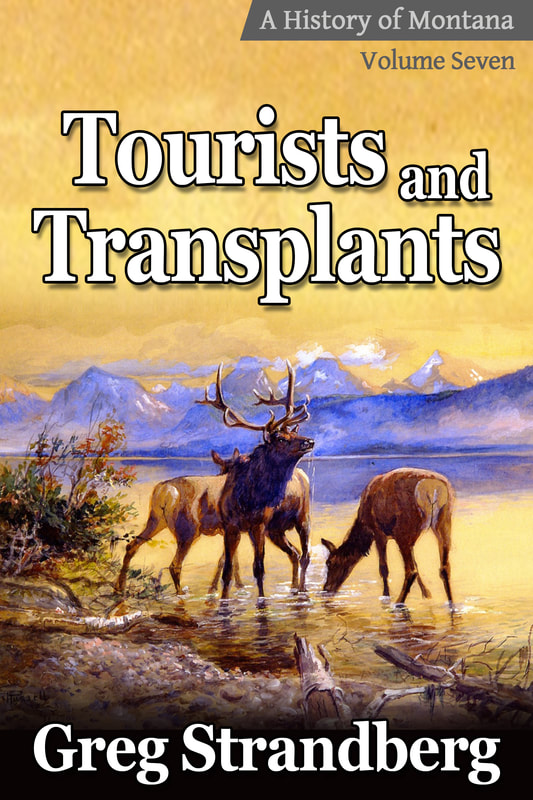Joe Howard was a momma’s boy.
He and his mother lived in the same two-bedroom apartment for 32 years, until Joe died in 1951.
He was just 17-years-old when he started working as a reporter in Great Falls, though he’d thrown papers starting when his mom was working at the newspaper in Canada. He continued to throw them when they moved to Great Falls.
Joe Howard was steeped in the news from an early age. He had other interests as well.
He drove a Chrysler coup and read the Wall Street Journal. He was a sharp dresser. He loved classical music. Beethoven’s 7th Symphony was his favorite.
“He spent a fortune on books, preferred beautiful women, good rye whiskey, and well-aged steaks,” a family friend remembered.
He did much of his work at a cabin near Flattop Mountain in Choteau County. A group of people he was quite fond of, the mixed-blood Metis people, had quite a hand in building the place.
Joe admired the Indians of Montana, and wrote about them a lot. Several pages in his landmark work are dedicated to them, such as this passage detailing their diet:
“He had thirty plants in the bulb, root or tuber classification, fifteen for salads, nine for greens, at least six edible tree or bush barks; he had fifty fruits. Twelve plants made his meal and flour, to made his sugar and syrup. And he topped this all off with ten plants for jellies, jams, or marmalades.”
He was a liberal writer at a conservative newspaper. Some of his articles about the Anaconda Company got him threats. He stashed a pistol under his car’s dashboard as a result.
That might come as a shock to us today, as Howard is quite revered in the state. Wasn’t always the case. And while Howard loved Montana, he knew that few others even knew where it was.
“Montana is a remote hinterland about as well known to the average eastern seaboard citizen as East or West Africa,” he wrote early on in his book.
“Joe Howard was one person that felt the rural people of Montana were worth covering,” said Bob Gilluly, a former editor of the Great Falls Tribune. He covered them a lot in the newspaper, and favorable at times. In his book, however, he often went after them.
While it’s true that Howard was hard on Anaconda and how the Company had its way with the state, he was often harder on the common sodbusting farmers that came from God-knows-where to sink their furrows into a land that simply couldn’t support them.
At the time of Montana’s homesteading boom in the 1910s, the national government was giving out 160 acres to those willing to farm them for several years. Eventually that allotment increased to 320 acres.
Montana’s dry land couldn’t support farms of so little size. Howard quotes John Wesley Powell of the USGS, telling congress in a report that states like Montana couldn’t function without allotments of at least 2,560 acres. Back then everyone thought Powell - and in turn, Howard - were crazy. Time is often the ultimate judge, however. Today the average size of a Montana farm is 2,036 acres.
Montana wasn’t the place for small-time farmers. But then Howard always viewed certain whites with disdain. He hated the buffalo hunters and what they’d done. Here’s a description of how, oftentimes just two men, would help wipe the plains clean:
“They preferred small herds, to avoid the stampedes inevitable with the large ones. Best range was about two hundred yards. The first shot would scatter the herd, but it would pause for a moment, swing, and by some inscrutable instinct, every animal would start in the same direction. The hunter then would shoot at the ground in front of them. This would turn the herd. He would continue this until the bewildered buffalo stopped running and stood helpless and terrified, to be shot down to the last animal. The number killed in one stand varied from a half dozen to eighty.”
The reason why Montana: High, Wide, and Handsome has been such a popular book for so long is because of descriptive passages like that.
You get a lot in the book, and lots of stories and colorful characters and just-darn-good writing.
We’ll continue our look at Joe Howard tomorrow, chronicling his later life, death, and legacy.
If I have time on Thursday I’ll wrap-up our Joseph Kinsey Howard week by giving you more passages from his book.
“The west, traditionally cheerful and carefree, dodges self-analysis like the plague,” he wrote.
We’ll give it our best shot.
Thanks for reading.

